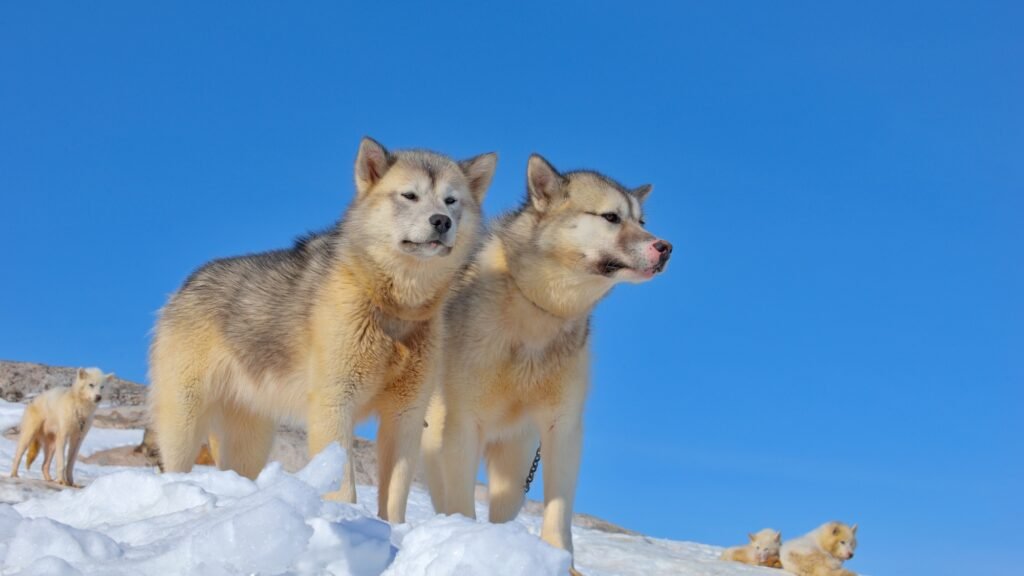For millennia, the harsh, unforgiving landscapes of the Arctic have been shaped by an extraordinary partnership between humans and dogs. Among these resilient companions, the Greenland Sled Dog, or Qimmeq as it’s known in Greenlandic, stands out not just for its enduring spirit but for a newly discovered genetic legacy stretching back a thousand years. Recent groundbreaking DNA analysis, reported by IFLScience, reveals these powerful canids may hold the title of the world’s oldest single dog breed, their genes mirroring a remarkable 1,000-year history of Arctic human migration and resilience. Yet, as climate change rapidly alters their icy domain and modern technology takes hold, the future of these living historical archives hangs precariously in the balance.
Unearthing a Millennium of Canine History
The journey to understand the Greenland Sled Dog’s profound past began with a critical need to safeguard its future. Alarmed by a precipitous decline in their numbers—from approximately 25,000 in 2002 to just 13,000 by 2020—scientists embarked on an ambitious project. Tatiana Feuerborn and her colleagues meticulously collected DNA samples from both living Qimmit and ancient remains unearthed at archaeological sites across Greenland. This comprehensive effort resulted in the sequencing of 92 dog genomes, providing an unprecedented genetic timeline spanning some 800 years. This robust dataset was then compared against over 1,900 published dog genomes, creating a powerful lens through which to view the Greenland Sled Dog’s unique genetic fingerprint.

The Oldest Breed? A Legacy of Genetic Continuity
The meticulous genetic comparisons yielded a truly remarkable discovery: the Greenland Sled Dogs form a distinct genetic clade, closely linked to other ancient Arctic dog populations, including a 3,700-year-old Alaskan dog. This finding is a testament to the extraordinary genetic continuity of the Qimmit. Unlike many dog breeds that have undergone significant mixing and diversification, the Greenland Sled Dog appears to have maintained a remarkably pure lineage for an astonishing length of time. This genetic purity, spanning a millennium, strongly positions the Qimmeq as potentially the oldest single dog breed in the world, a living relic of the deep connection between humans and canids in the polar regions.
Sled Dogs as Historical Navigators: Rewriting Inuit Migration

Beyond their own ancient lineage, the Qimmit’s DNA has proven to be an invaluable key to understanding human history in the Arctic. The genetic continuity observed in these dogs provides compelling evidence that supports a theory of rapid human migration: the swift movement of Inuit people from northern Canada to Greenland. Crucially, this canine genetic data suggests that this significant migration occurred around the 10th century CE, approximately 200 years earlier than the commonly accepted 12th-century CE timeline. This revelation adds substantial weight to the argument that Inuit populations had already established themselves in Greenland before the arrival of Norse travelers, offering a fascinating new perspective on the island’s early human inhabitants.
Facing Modern Threats: Climate Change and the Decline of the Qimmit

Despite their incredible history and enduring resilience, the Greenland Sled Dogs are now confronting unprecedented modern challenges that threaten their very existence. The primary culprits are climate change and the advent of contemporary technology. The rapid loss of snow and ice, their natural hunting and travel grounds, severely impacts their traditional role and way of life. Concurrently, the increasing reliance on snowmobiles for transportation has diminished the practical necessity for large sled dog teams, contributing to their plummeting numbers. This dual assault of environmental shifts and technological advancement has created a precarious situation for a breed that has faithfully served Arctic communities for centuries.
A Call to Action: Preserving a Living Arctic Heritage
The urgent decline of the Qimmit has spurred scientists and conservationists into action. The documentation of their remaining genetic diversity is not merely an academic exercise; it forms the crucial foundation for informed management and conservation efforts aimed at preserving these extraordinary animals. The insights gleaned from studying the Qimmit—regarding levels of inbreeding and introgression—provide a baseline for future work focused on the local evolution of animals shaped by humans and their unique environments. Safeguarding the Greenland Sled Dog is more than just protecting a species; it is about preserving a vital part of Arctic cultural heritage and an unparalleled living link to a profound historical partnership between humans and dogs.

Sumi Sarkar from India holds a B Tech degree in Information Technology, is a freelance film maker, scriptwriter, content editor who loves animals, especially dogs.






